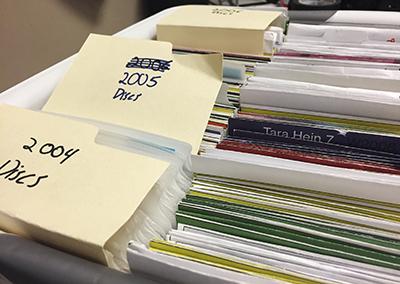
RJI news
Preserving a visual record, Part 1
The drive to create a born-digital photo archive at the Columbia Missourian
Listening to community newspapers with Walt Potter
A retired newspaper exec looks to give back to the community newspapers that raised him with an ear to the ground for change.
Tracy Clark’s take on 15 news aggregation apps: Part 3
NewsRepublic NewsRepublic was founded in 2008 by CEO Gilles Raymond. In March 2012 it received a Series A $3 million investment and in October 2013 it received a Series B $6 million VC funding. As explained on an earlier version of their site, “NewsRepublic is a global news app that lets you be your own … Continued
Tracy Clark’s take on 15 news aggregation apps: Part 2
Google Play Newsstand Google has made several attempts at media aggregation, first with Google News in 2002, which was deemed beta for the first three years. It promotes itself as a service that “aggregates real-time news content from news sources around the world, generating 72 editions in 55 languages, and powering Google’s news search. In … Continued
News startup survey: Revenue growth, capacity challenges
In the chaotic world of online news startups, I think it makes sense to take a long view. Whenever someone asks whether a big breakthrough is coming, I scratch my head. That’s because progress at this time is so incremental — a game of inches, feet, maybe yards but rarely miles — a marathon with no … Continued
Tracy Clark’s take on 15 news aggregation apps: Is your go-to app on this chart?
(U.S.-based rankings/ratings; data from iOS app store via AppAnnie as of July 6, 2015) Aggregator Released Ranking (U.S. News) Rating (U.S.) Facebook Paper Jan 29, 2014 56 4.0 (8,683 ratings) Feedly Nov 19, 2010 72 4.5 (40,421 ratings) Flipboard Jul 21 2010 11 4.5 (177,875 ratings) Google Newsstand Sep 3, 2011 112 3.0 (2,461 ratings) … Continued
Tracy Clark’s take on 15 news aggregation apps: Is your go-to app on this list?
The news customization market is still very early and fragmented yet extremely promising. In the past five years about 20 serious players have emerged filling niche areas of this market, with some acquisitions already occurring (Pulse by LinkedIn in 2013, Summly by Yahoo in 2013, Zite by Flipboard in 2014). Big players Facebook and Apple … Continued
Lessons learned and questions raised during the Potter Listening Tour, Part 2
As an old hand in print newspapers, I was struck by the contrast between the often days-long reporting process I remember and the instantaneous production I strived for during the tour (I posted to Facebook and Twitter). I had to create my words almost at the same time I was recording the words of my … Continued
Structured journalism: Evaluating journalism beyond the news article
Does the traditional news article still make sense as the primary unit of news in the age of the Internet and smartphone? The text article has been around for centuries, and yet has barely changed with the arrival of digital technologies. Articles still consist of a headline and an undifferentiated block of text. They are … Continued
Despite challenges, Southeast Missourian improves print product, grows online presence
Last year the Local Media Association named the Southeast Missourian the second-best daily newspaper with a circulation under 30,000 in North America. Bob Miller, editor of the Cape Girardeau paper, wants to build on that success, but he acknowledges the challenges posed by the convergence of print and digital technologies. First, there’s figuring out what … Continued






